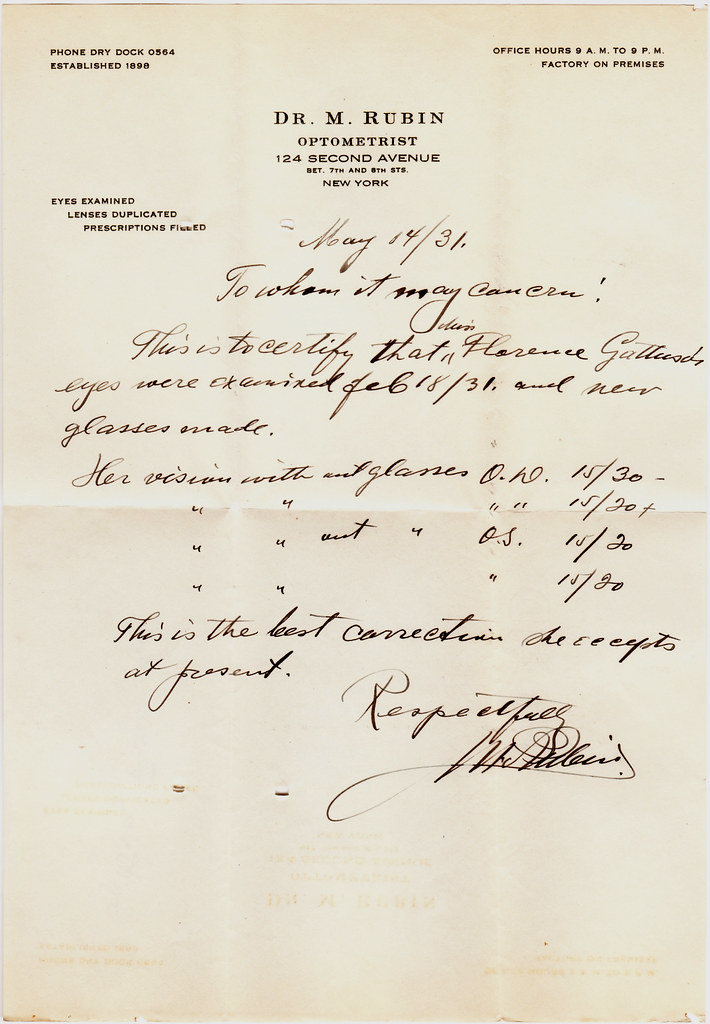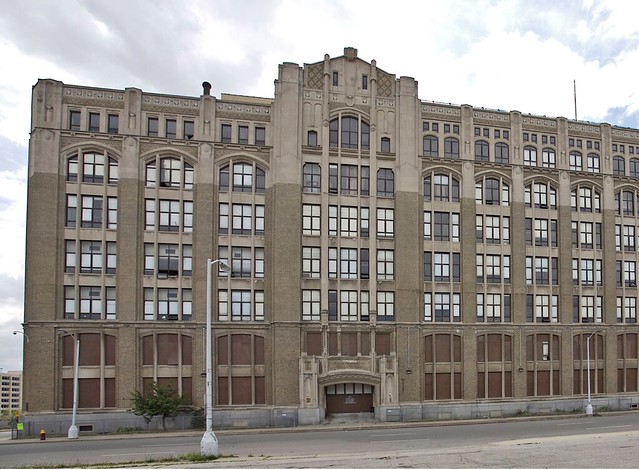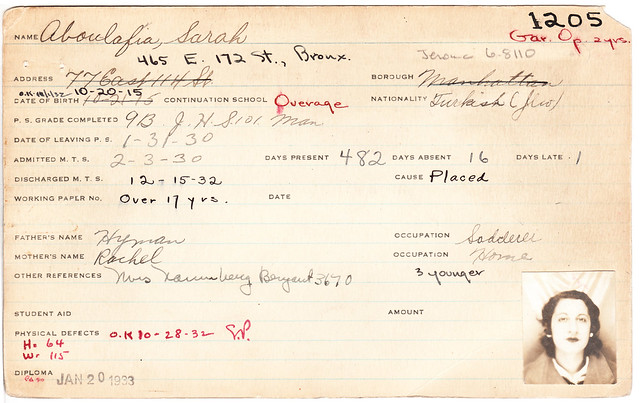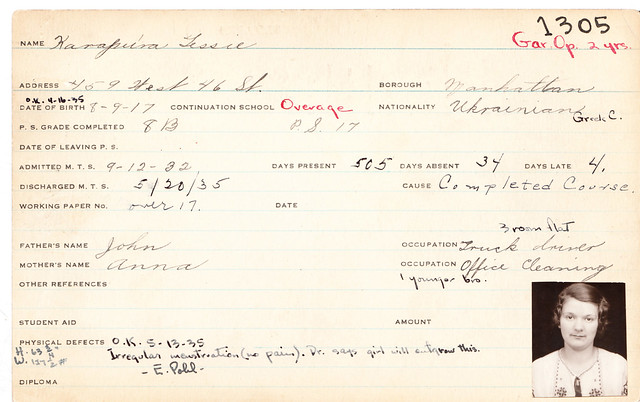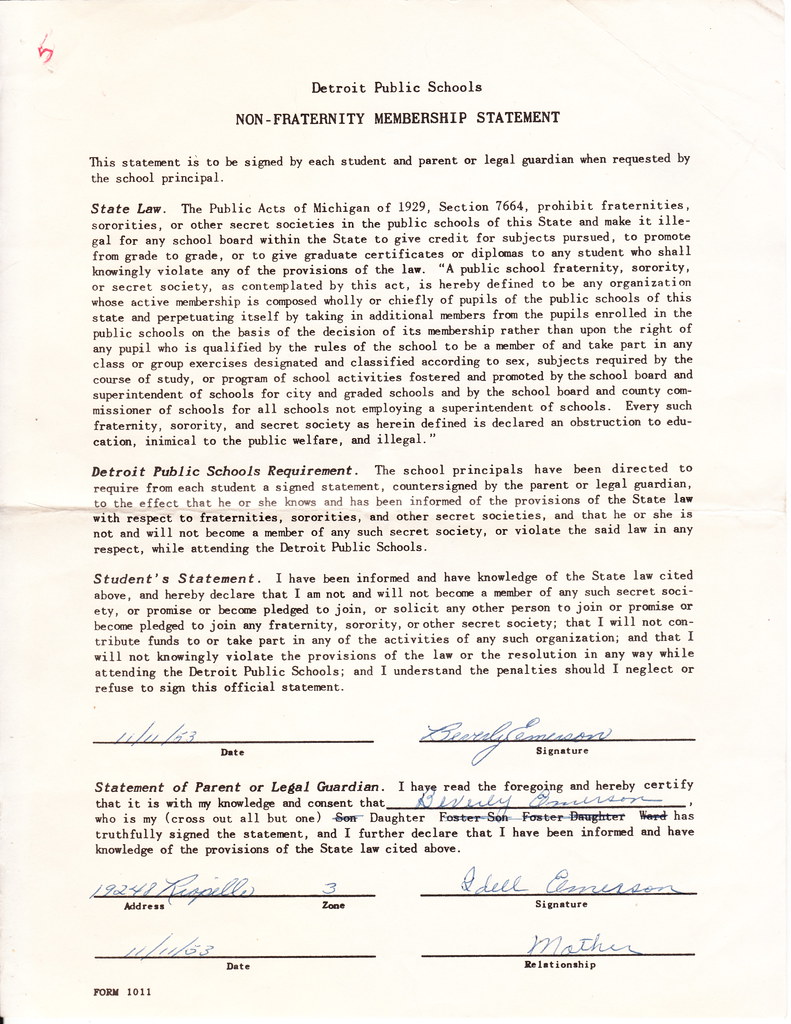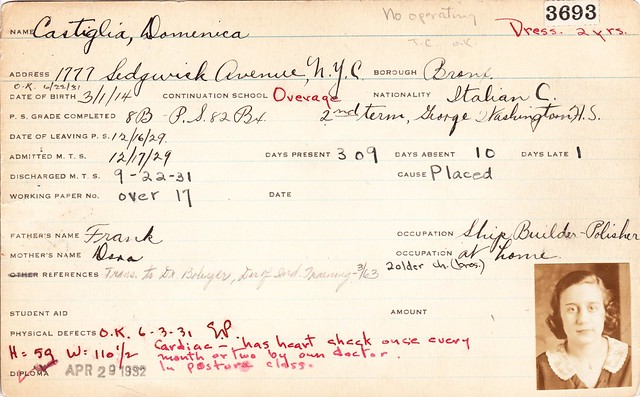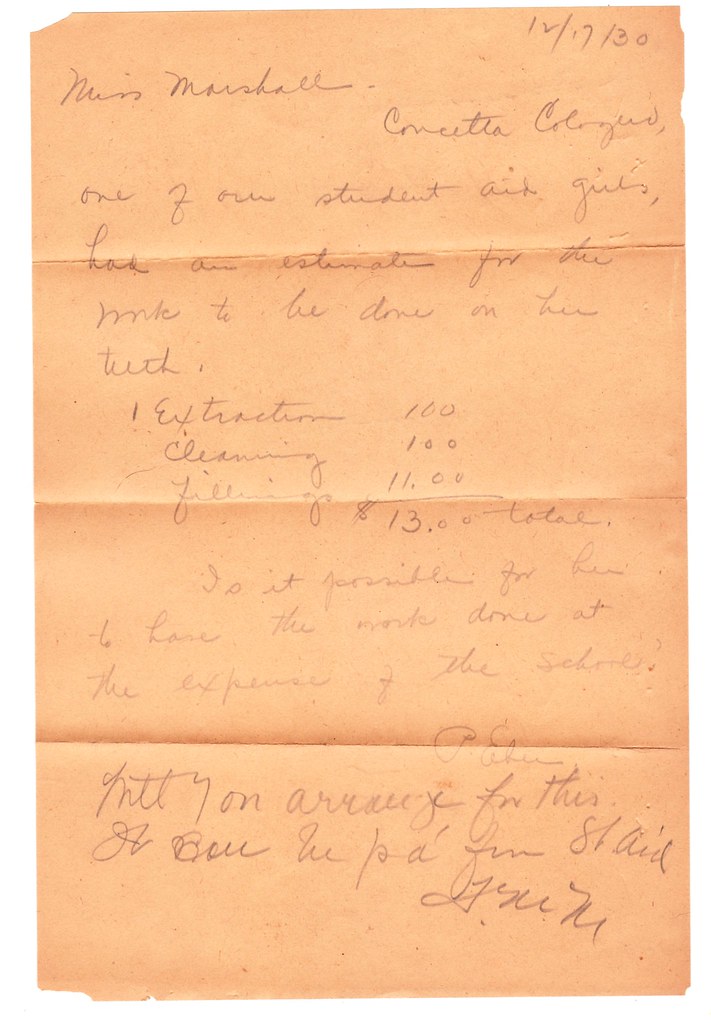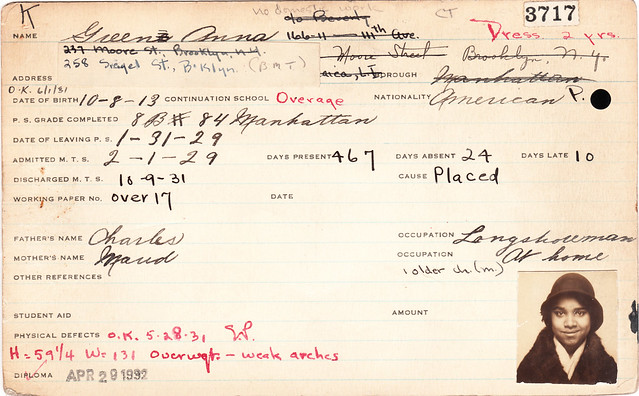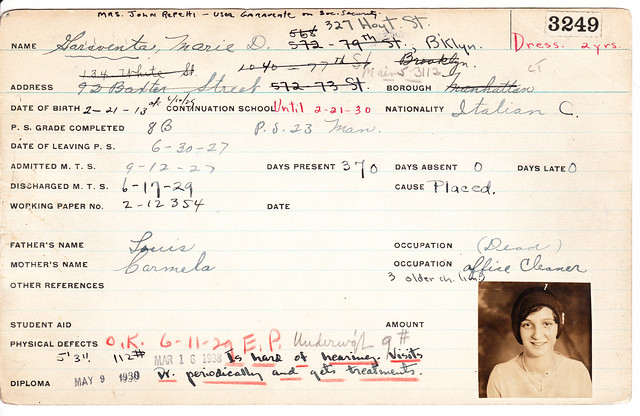
What you see above is not a report card, obviously -- it's an old police mug shot.
Or, rather, it's a Photoshopped image
based on an old police mug shot. It's one of several 1950s mug shots that have been subtly doctored and are currently being reproduced and sold by a Cincinnati operation
called Larken Design.
I learned about Larken -- which consists of two women in their late 20s -- in
this article, which ran in Sunday's
New York Times. It says that the photos had been discarded more than a decade ago by a California sheriff's office (the "Cincinnati Police Department" lettering on the sign is one of Larken's Photoshop adjustments to the original photo) and had somehow ended up at a flea market and then at a Nevada antiques shop, where one of the Larken partners, Tara Finke, found them two years ago.
Sounds kind of familiar, right?
Finke and the other Larken partner, Megan Scherer, began selling prints, posters, and notebooks based on the mug shots earlier this year, and they've been a hit at craft shows and on Etsy. In the
Times article, Finke is quoted describing the products' appeal like so: "I definitely think it’s the mystery. I kind of feel like I’m getting a glimpse of something I’m not supposed to.”
What Finke was referring to there, whether she realized it or not, was voyeurism -- the cheap thrill of getting a peek into someone else's private affairs, the tingle we get from the public airing of something private, and the potential for shame if we're caught looking. Voyeurism is a very specific term, because it indicts the viewer in some sense of culpability or responsibility, and it's at the heart of what most of us find appealing about found objects. One big weakness in that
Times article is that it doesn't address voyeurism at all and instead describes the Larken products as exercises in ’50s nostalgia, which I think is way off the mark. (Another weakness is that the article doesn't mention Mark Michaelson's seminal book of found mug shot portraits,
Least Wanted. If you like Permanent Record, you'll
really like that book. Trust me.)
I've spent a lot of time thinking about privacy and voyeurism ever since I found the Manhattan Trade School report cards 15 years ago, and especially since I decided to use the cards as the basis for a media project. For starters, I wondered if there were any legal issues, so I consulted an attorney. (I'll spare you the details, but the short version is that I've been assured that I'm on safe legal footing for this blog, for the Slate series, etc.)
But the bigger issue, I've always felt, is less legal than ethical, or maybe cultural. Once I saved the report cards (when I found them, they were about to be thrown out), what responsibility, if any, did I take on? What moral imperatives, if any, accrued to me? As I've mentioned in previous entries on this blog, many of the cards include very personal information about the students -- is it wrong for me to have access to that information? Is it wrong for me to share it with others (i.e., with you)? Is it wrong that the cards with the most heartbreaking tales of woe and pathos tend to be the ones that are, for lack of a better term, my favorites? Does the fact that the students are now dead make it all okay? Or does it make it worse, since they're no longer around to grant or deny me permission to share their stories?
Then there's all the history documented in the report cards -- history about New York City, about the education system, about the garment business, and so on. Would it have been wrong not to share that history? Would it have been better if I blacked out the students' names and/or photos when showing the cards?
My feeling about all this is, basically, that it's complicated. I've tried to be sensitive to issues of the students' privacy, and I've also tried to be more than just a voyeur. I don't ever want the primary response to the report cards -- from me or from anyone else -- to be limited to, "Wow, look at that old stuff, that is so fucking cool!" I fully agree that there's tremendous temptation to respond in precisely that way, though. Frankly, it's more or less how I reacted on the night I found the cards.
But as I quickly realized, the important thing to remember about the report cards -- and about mug shots like the ones Larken Design is peddling -- is that they're not just evocative artifacts or romantic curios from the past (or, um, vehicles for a media project). They're real documents of real people's lives, and that's something I've always tried to keep in mind. That's a big part of why I decided to track down some of the students' families, because I wanted to make the students feel less like ciphers and more like real human beings. My hope is that I'm telling these stories in a way that makes the students seem real to you as well.
Meanwhile, I've sent a note to the Larken Design gals, telling them about Permanent Record and suggesting some obvious parallels between their project and mine. They're probably swamped with e-mails today, since they were featured in the
Times, but I'm hoping they'll get back to me so we can compare notes.
